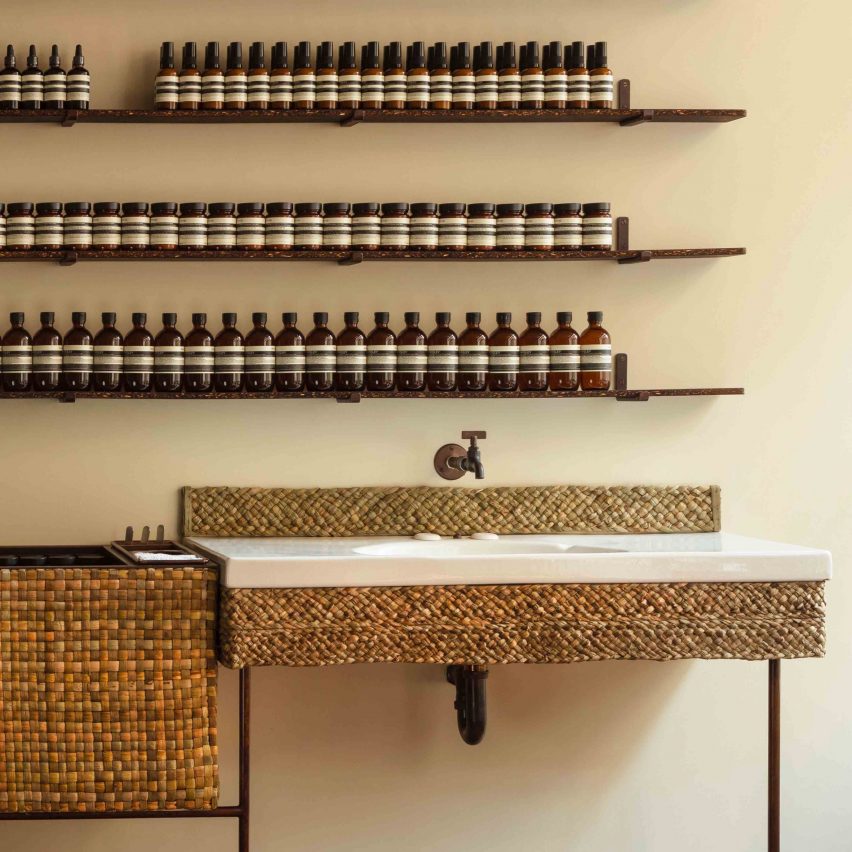
London design studio JamesPlumb blended handwoven bulrush shelves with earthy hemp accents to create the interiors for this Aesop store in Cambridge, which takes cues from the nearby River Cam.
Located on the city’s Trinity Street, the Aesop outlet was conceived as a “woven reading room” that provides a place to shop and leaf through books, according to the Australian skincare and cosmetics brand.
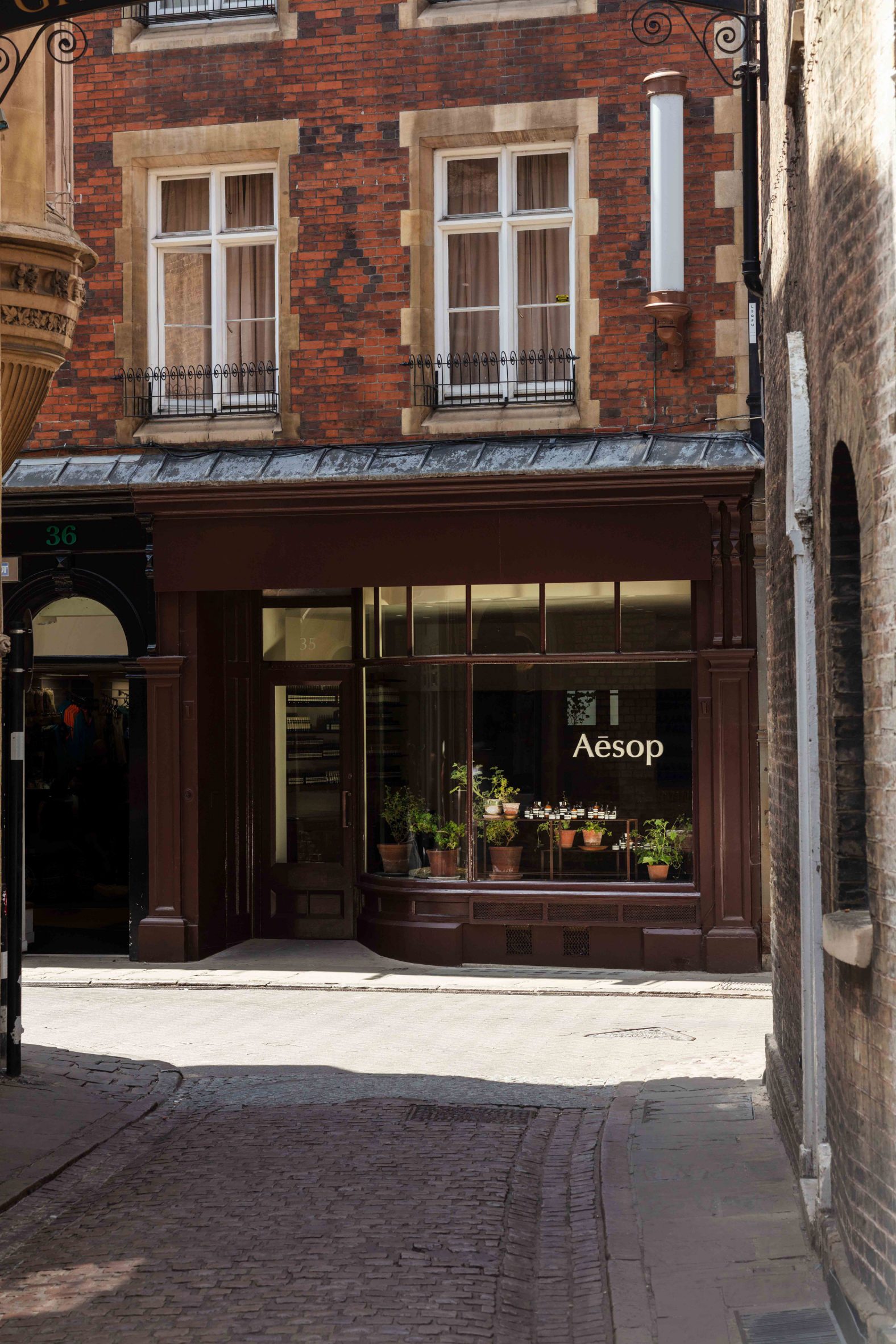
The store’s understated shopfront is painted a dark brown hue informed by well-worn leather, which nods to antique book bindings in reference to Cambridge’s history of academia.
Inside, a curved and slatted window seat doubles as a plinth for potted pelargoniums that frame the store’s light-filled, street-facing room featuring earthy-toned walls.
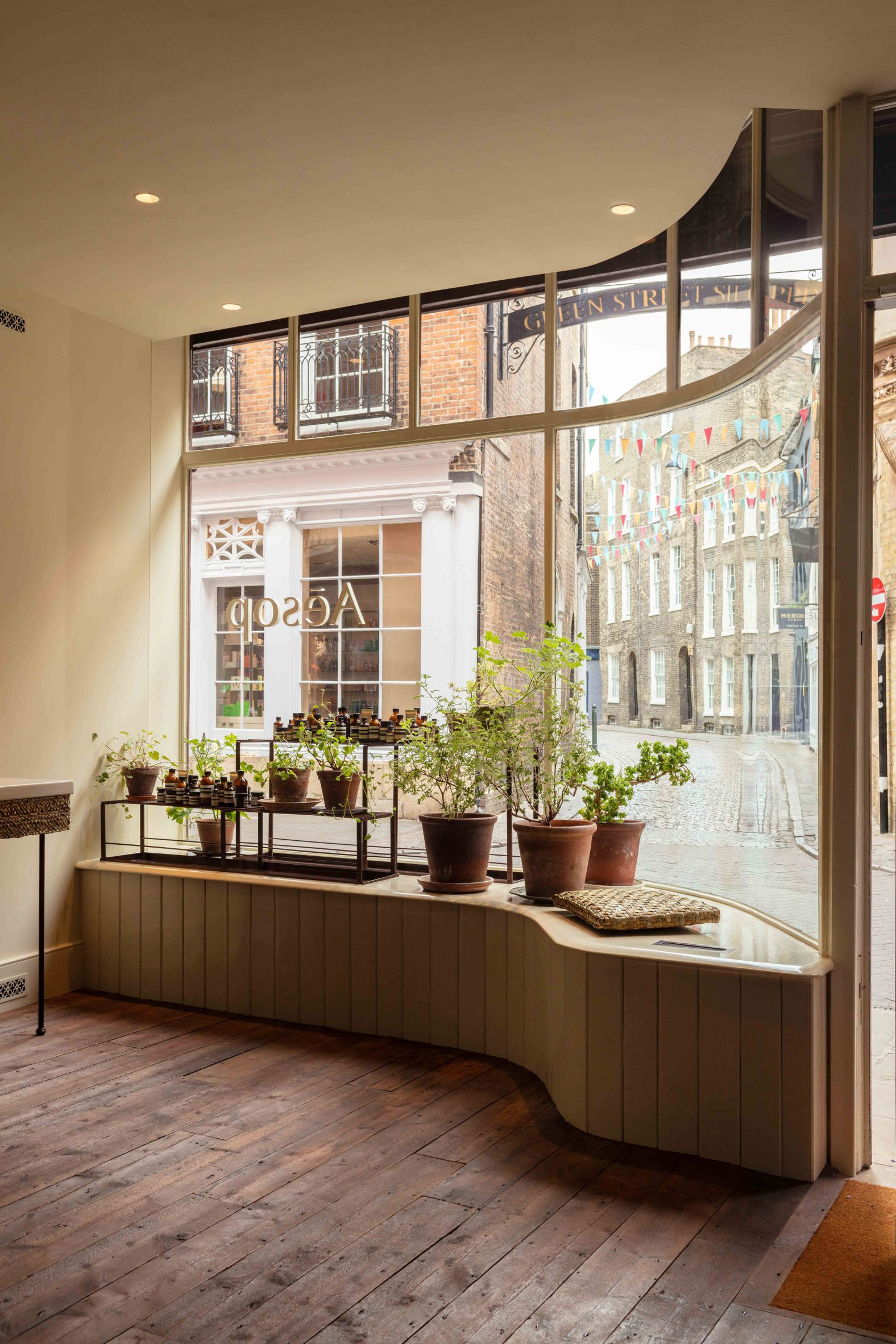
This space is defined by oversized, textured shelves created from freshwater bulrush plants – locally sourced and handwoven by rush weaver Felicity Irons of Rush Matters.
“The city itself and the surrounding landscape were the starting point for our design,” studio founders Hannah Plumb and James Russel told Dezeen.
“The River Cam plays a huge part in that – we were increasingly drawn to it and felt strongly that it sets the pace and the pulse of the city of Cambridge.”
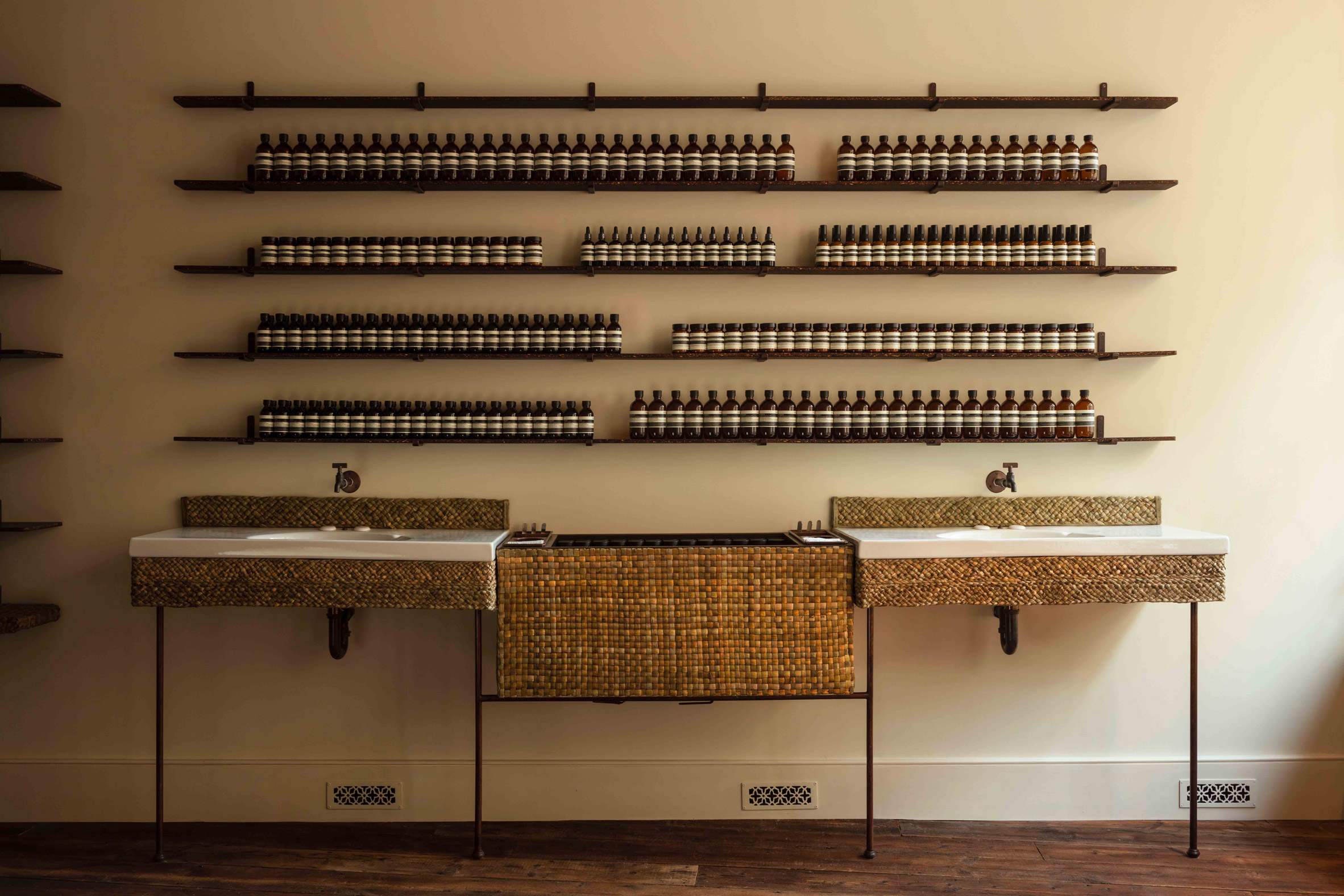
Other shelving in this room is made from hemp grown on the nearby Margent Farm, which was combined with bio-resin to form geometric slabs of cabinetry that display various Aesop products, as well as a large sink.
“[The hemp] absorbs a huge amount of carbon as it grows, and to be so local to the project was wonderful,” acknowledged Plumb and Russel.
“We wanted to use materials that were as local as possible, and bulrush being literally of the local waters made sense – both because of its beauty and tactility, and also because of the chance to use a material that would travel so few miles, and use so little energy in production,” they added.
At the back of the store, another room features walls painted in a darker hue than the street-facing space, which takes cues from the brown flowers of bulrush plants.
Visitors are invited to sit in a low-slung antique armchair upholstered in floral fabric or browse the various books displayed on the same hemp and bulrush cabinetry that exists throughout the store.
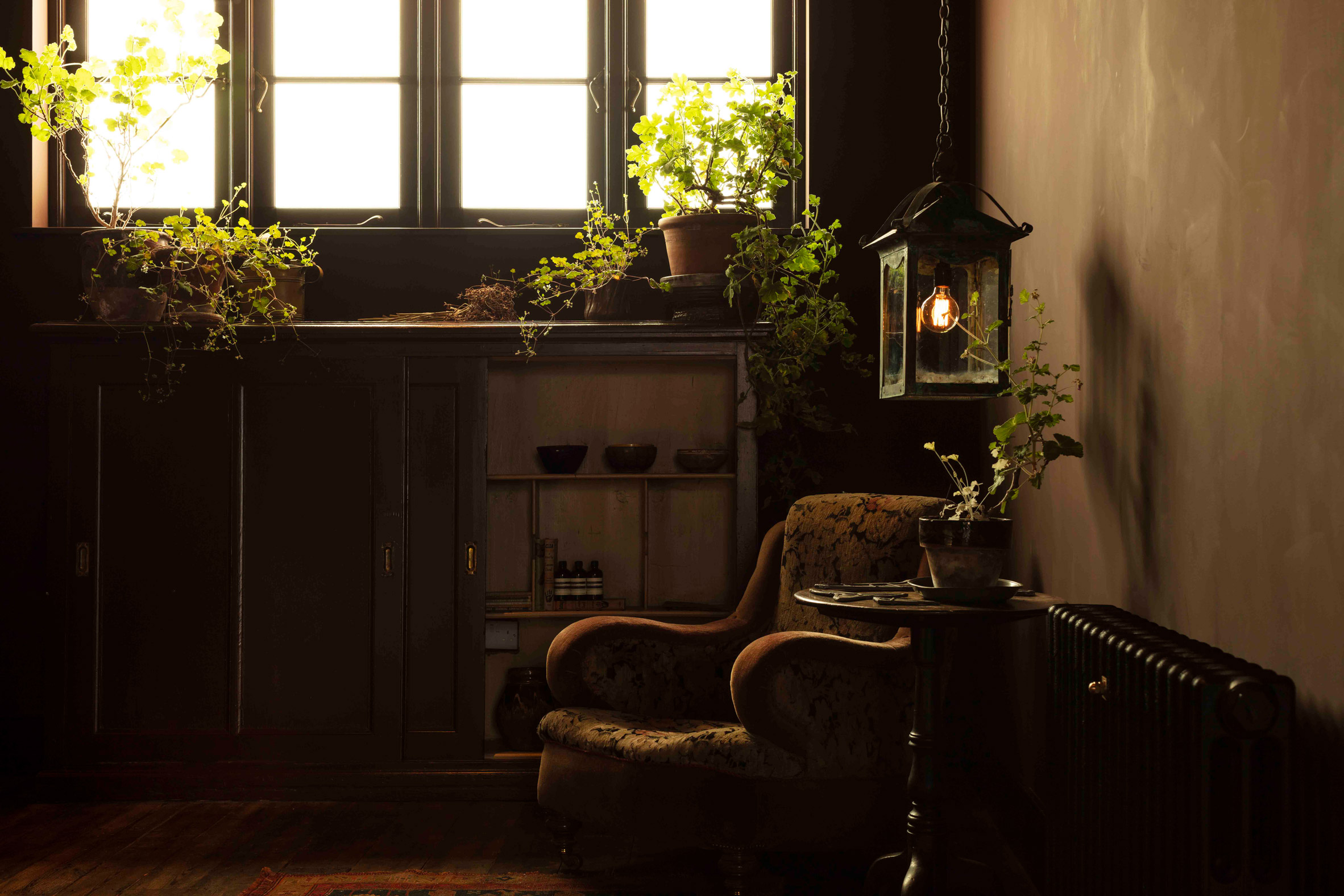
Original nineteenth-century polished wooden floorboards also feature in both rooms and intend to echo the outlet’s emphasis on local history.
“Each Aesop store has its own character, and for this one, we responded specifically to its location in the heart of Cambridge,” concluded Plumb and Russel.
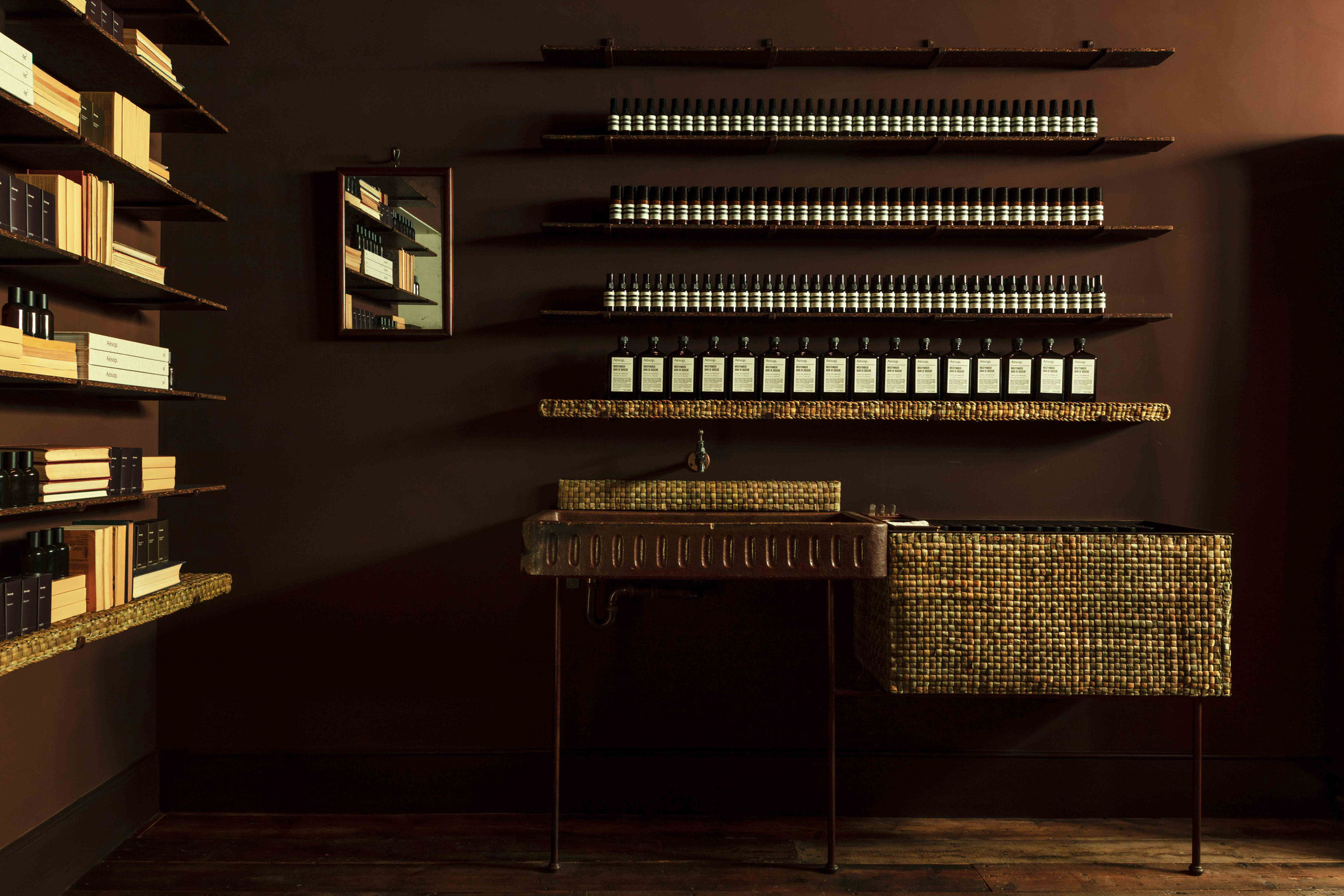
This Cambridge branch is not the first Aesop store designed by JamesPlumb. The studio also created one in London’s Bloomsbury where water runs from shelf to shelf and a stone-based store in Bath that celebrates the city’s architectural landscape.
Other Aesop outlets worldwide include a Tokyo branch defined by plaster and steel and a Toronto store featuring Victorian balustrades.
The photography is by Oskar Proctor.
The post JamesPlumb fuses bulrush and hemp elements at Cambridge Aesop store appeared first on Dezeen.
